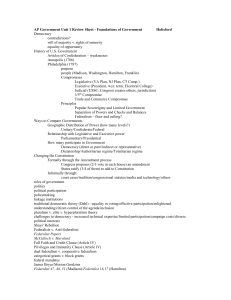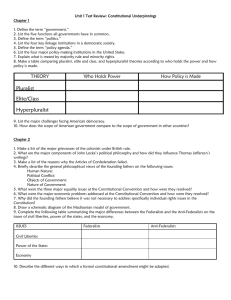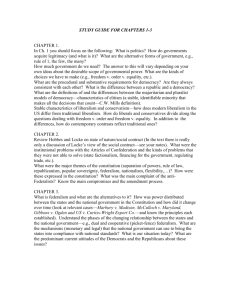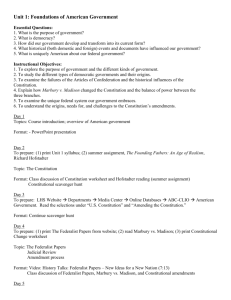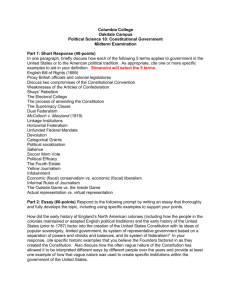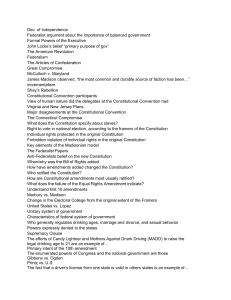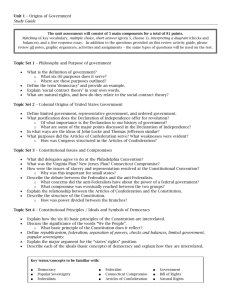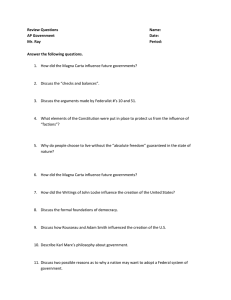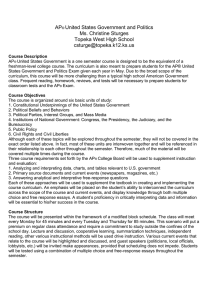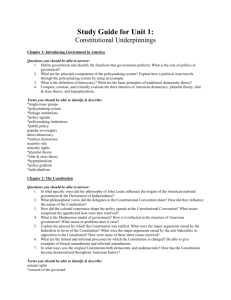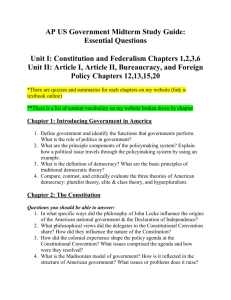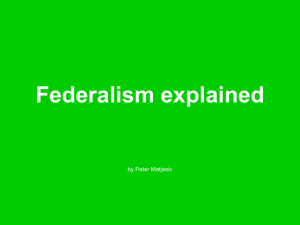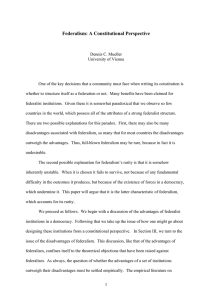Unit I: Constitutional Underpinnings of United States Government
advertisement
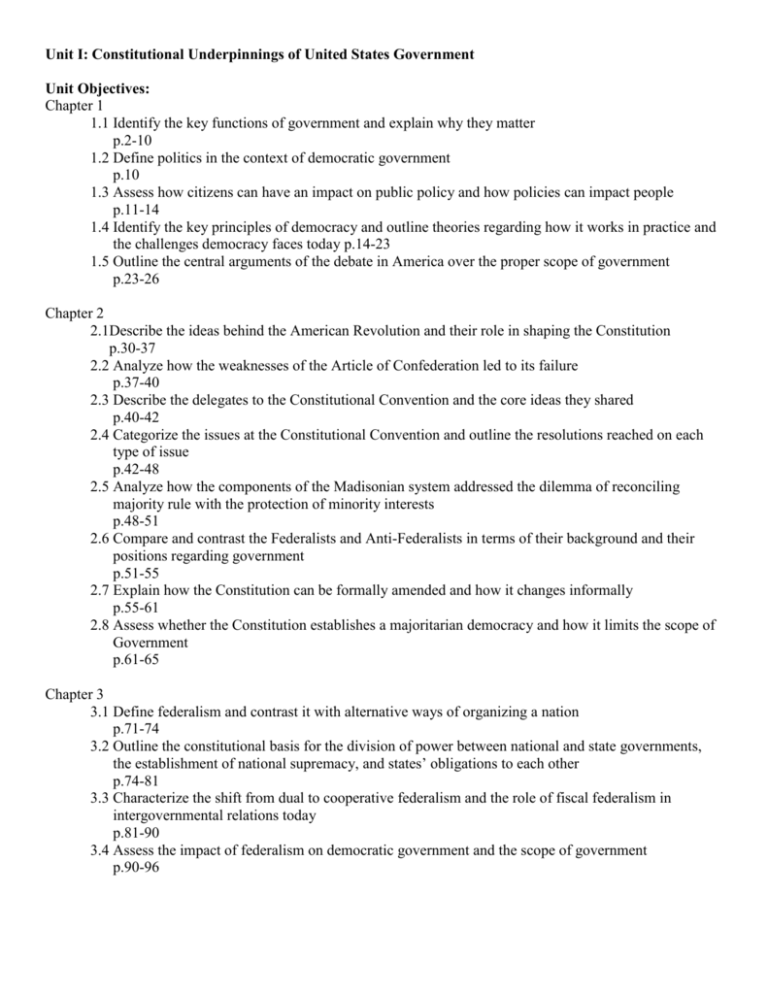
Unit I: Constitutional Underpinnings of United States Government Unit Objectives: Chapter 1 1.1 Identify the key functions of government and explain why they matter p.2-10 1.2 Define politics in the context of democratic government p.10 1.3 Assess how citizens can have an impact on public policy and how policies can impact people p.11-14 1.4 Identify the key principles of democracy and outline theories regarding how it works in practice and the challenges democracy faces today p.14-23 1.5 Outline the central arguments of the debate in America over the proper scope of government p.23-26 Chapter 2 2.1Describe the ideas behind the American Revolution and their role in shaping the Constitution p.30-37 2.2 Analyze how the weaknesses of the Article of Confederation led to its failure p.37-40 2.3 Describe the delegates to the Constitutional Convention and the core ideas they shared p.40-42 2.4 Categorize the issues at the Constitutional Convention and outline the resolutions reached on each type of issue p.42-48 2.5 Analyze how the components of the Madisonian system addressed the dilemma of reconciling majority rule with the protection of minority interests p.48-51 2.6 Compare and contrast the Federalists and Anti-Federalists in terms of their background and their positions regarding government p.51-55 2.7 Explain how the Constitution can be formally amended and how it changes informally p.55-61 2.8 Assess whether the Constitution establishes a majoritarian democracy and how it limits the scope of Government p.61-65 Chapter 3 3.1 Define federalism and contrast it with alternative ways of organizing a nation p.71-74 3.2 Outline the constitutional basis for the division of power between national and state governments, the establishment of national supremacy, and states’ obligations to each other p.74-81 3.3 Characterize the shift from dual to cooperative federalism and the role of fiscal federalism in intergovernmental relations today p.81-90 3.4 Assess the impact of federalism on democratic government and the scope of government p.90-96 Resources: • Edwards, Government in America o Chapter 1: Introducing Government in America, p. 1-29 o Chapter 2: The Constitution, p. 30-67 o Chapter 3: Federalism, p. 68-97 • Woll, American Government: Readings and Cases o John Locke – “Second Treatise, Of Civil Government” o James Madison – “Federalist 47, 48, 51” o Alexander Hamilton – “Federalist 16, 17” o James Madison – “Federalist 44” o James Madison – “Federalist 39” o Morton Grodzins – “The Federal System” Key Concepts and Items: • Government (and purposes of) • Politics • Policymaking system • Linkage institutions • Policymaking institutions • Public policy • Democracy • Majority rule vs. Minority rights • Representation • Theories of government: pluralist, elite and class, hyperpluralist, majoritarian • Declaration of Independence • U.S. Constitution • Natural rights • Consent of the government • Limited government • Articles of Confederation • Shays’ Rebellion • Factions • New Jersey vs. Virginia Plans • Connecticut Compromise • Writ of habeas corpus • Separation of powers • Checks and balances • Democracy vs. Republic • Federalists vs. Anti-Federalists • Federalist Papers • Bill of Rights • Marbury v. Madison • Judicial review • Federalism • Unitary vs. Confederate vs. Federal systems • Intergovernmental relations • Supremacy clause • McCulloch v. Maryland • Enumerated powers • Implied powers • Elastic clause • Gibbons v. Ogden • Full faith and credit clause • Dual vs. Cooperative federalism • Fiscal federalism • Categorical grants • Block grants • Project grants • Formula grants
